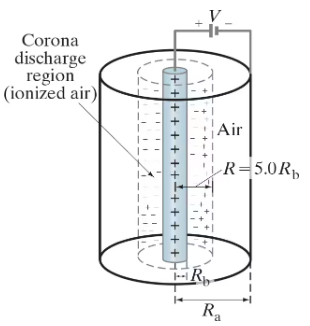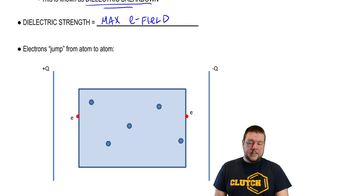Textbook Question
Dry air will break down if the electric field exceeds about 3.0 x 106 V/m. What amount of charge can be placed on an air-gap capacitor if the area of each plate is 8.2 cm2?

 Verified step by step guidance
Verified step by step guidance Verified video answer for a similar problem:
Verified video answer for a similar problem:



 4:32m
4:32mMaster Dielectric Breakdown with a bite sized video explanation from Patrick
Start learning